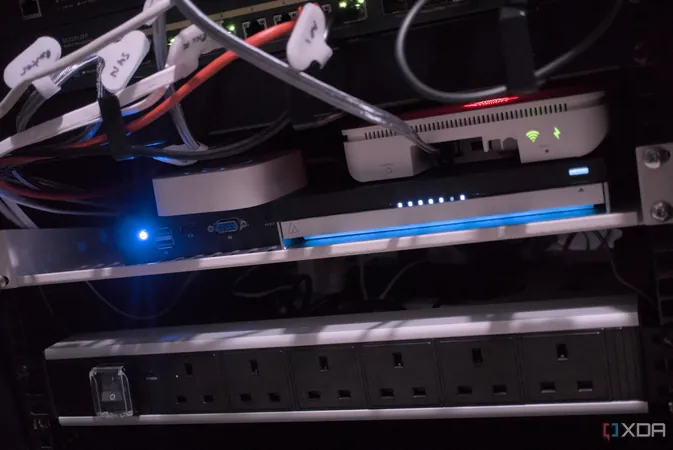
Unlocking Home Network Resilience: 5 Genius Ways to Use Keepalived
2025-06-30
Author: Olivia
The Growing Reliance on Home Services
As our reliance on self-hosted services escalates, ensuring the stability and availability of those services becomes paramount. This isn't just about tech enthusiasts; it's a family affair where downtime can disrupt daily life. To combat this challenge, I've built a high-availability Proxmox cluster, yet I still faced the threat of single points of failure in my network. Enter Keepalived!
What is Keepalived?
Keepalived is a game-changer that employs the Virtual Router Redundancy Protocol (VRRP) to manage multiple servers or services on a single virtual IP address. In simpler terms, it offers a seamless failover solution, which is crucial for maintaining uninterrupted network connectivity.
5 Ways Keepalived Transformed My Home Network
1. Fortifying DNS Services
Self-hosting my DNS server is both rewarding and privacy-enhancing, a necessary shield against the data-mining tendencies of the online world. I utilize Technitium for this purpose, which currently lacks clustering capabilities. Until that feature becomes available, I've strategically integrated Keepalived across my NAS and Proxmox-powered mini PC. This allows me to access both Technitium instances through a single virtual IP, ensuring my network remains shielded even if one instance fails.
2. Protecting My Smart Home with Home Assistant
Smart homes are only as reliable as their underlying systems, and that's why I integrate Keepalived to fortify my Home Assistant setup. By running Home Assistant as a primary VM and leveraging Docker on another device, I ensure that automations continue uninterrupted. With a bit of cloud backup magic and Keepalived monitoring, I can count on swift failover in case of connectivity issues.
3. Guarding Access with a Steadfast Reverse Proxy
A reverse proxy is the backbone of my self-hosted services, serving as the entry point to my network. By connecting Nginx or HAProxy with Keepalived, I eliminate the risk of any downtime due to a single point of failure. The implementation is straightforward, requiring merely the setup of priority levels for VRRP instances and a couple of simple commands to get firewall rules ready.
4. Ensuring VPN Connectivity Never Falters
Remote access via VPN remains critical for my home lab. To keep my OpenVPN services running smoothly, I've deployed them on two servers, bound to the same virtual IP through Keepalived. This redundancy guarantees I can access my network freely, also mitigating potential issues of multiple failures.
5. Simplifying Proxmox Cluster Management
Administering a Proxmox cluster can feel daunting, especially if one node is down. Implementing Keepalived for uniform access through a virtual IP streamlines the process, enabling me to log into the active node with minimal fuss—saving precious moments that add up over time.
The Vision Forward
While I’ve successfully integrated Keepalived into various aspects of my home network, my ambitions don't stop here. I aspire to run Keepalived on every possible service to ensure maximum uptime. Currently, I’m transitioning my firewall to OPNsense, which features built-in CARP for clustering. Until I achieve my ideal setup, Keepalived remains a steadfast ally in my quest for a resilient home network.









 Brasil (PT)
Brasil (PT)
 Canada (EN)
Canada (EN)
 Chile (ES)
Chile (ES)
 Česko (CS)
Česko (CS)
 대한민국 (KO)
대한민국 (KO)
 España (ES)
España (ES)
 France (FR)
France (FR)
 Hong Kong (EN)
Hong Kong (EN)
 Italia (IT)
Italia (IT)
 日本 (JA)
日本 (JA)
 Magyarország (HU)
Magyarország (HU)
 Norge (NO)
Norge (NO)
 Polska (PL)
Polska (PL)
 Schweiz (DE)
Schweiz (DE)
 Singapore (EN)
Singapore (EN)
 Sverige (SV)
Sverige (SV)
 Suomi (FI)
Suomi (FI)
 Türkiye (TR)
Türkiye (TR)
 الإمارات العربية المتحدة (AR)
الإمارات العربية المتحدة (AR)